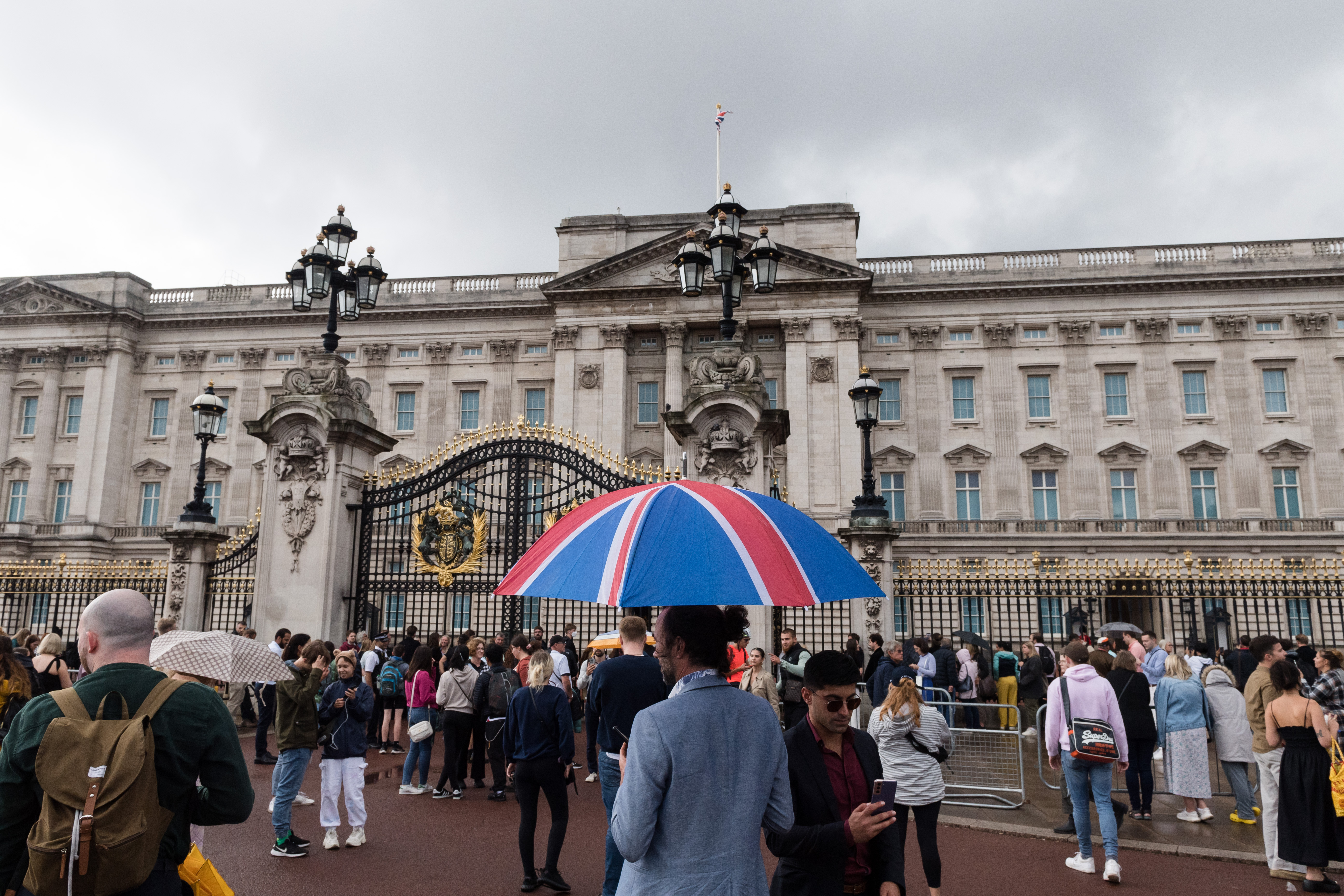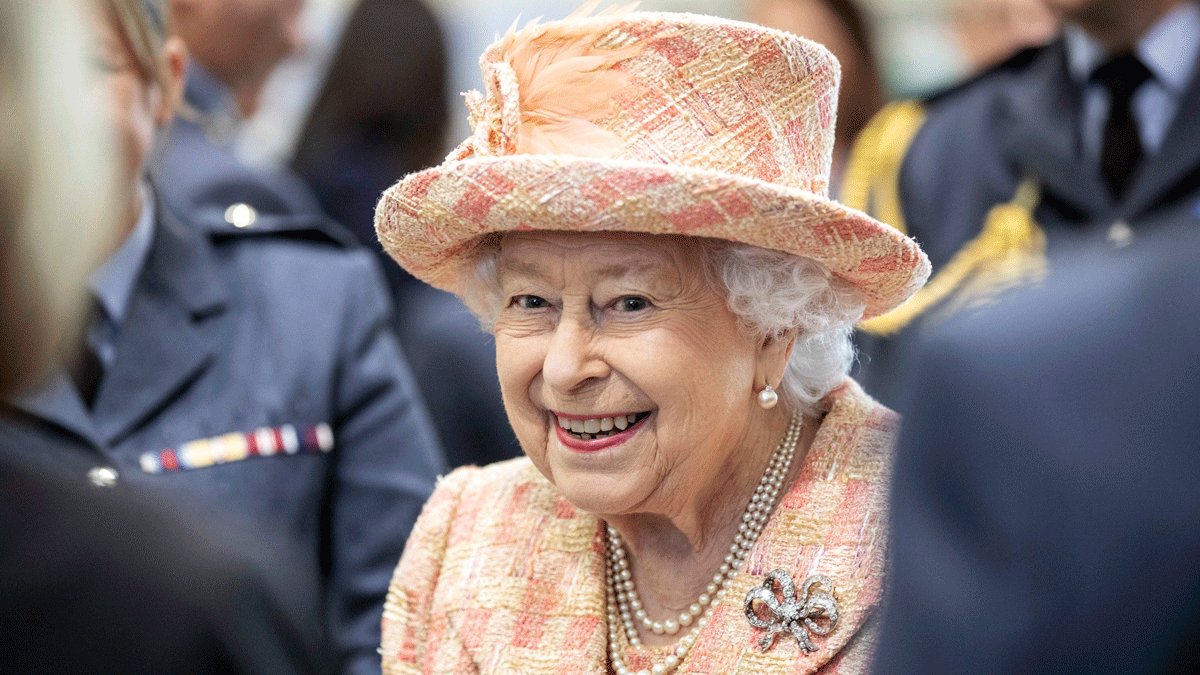Queen Elizabeth II died at the age of 96 Thursday, setting off a wave of changes and pageantry as Britain and the royal family mourn their longest-serving monarch.
The palace announced the queen had died at Balmoral Castle, her summer residence in Scotland, where members of the royal family had rushed to her side after her health took a turn for the worse.
Here's what we know about what happens next.
Who Will Be the Next King?
Get New England news, weather forecasts and entertainment stories to your inbox. Sign up for NECN newsletters.
The queen's death leaves her 73-year-old son, Charles, as Britain's monarch.
The palace said Charles and his wife Camilla, the queen consort, will stay at Balmoral overnight and travel to London on Friday.
The British monarchy’s rules state that “a new sovereign succeeds to the throne as soon as his or her predecessor dies.”
That means Queen Elizabeth II’s eldest son, Charles, became king immediately upon her death. However, it may be months or even longer before Charles’ formal coronation. In Elizabeth’s case, her coronation came on June 2, 1953 -- 16 months after her accession on Feb. 6, 1952, when her father, King George VI, died. In the meantime, he will record a televised speech to be broadcast to the country on Friday and speak with Prime Minister Liz Truss, according to CNBC.
Charles’ increased role began gradually, when the queen began cutting back on long-haul flights, resulting in Charles taking her place at a 2013 Commonwealth Heads of Government meeting in Sri Lanka.
Then in 2017, he represented the queen at the annual Remembrance Day ceremony marking the end of World War I, laying the monarch’s wreath at the foot of the Cenotaph in London. It was the first time the queen had not performed the solemn ritual, other than when she was pregnant or out of the country.
What Happens Next?
Within 24 hours of a monarch’s death, a new sovereign is proclaimed formally as soon as possible at St. James’s Palace in London by the “Accession Council.” This is made up of officials from the Privy Council, which includes senior Cabinet ministers, judges and leaders of the Church of England, who are summoned to the palace for the meeting. For the first time, the Privy Council meeting will be televised, according to CNBC.
A 41-gun salute at Hyde Park fired by the King’s Troop Royal Horse Artillery and a 62-gun salute at the Tower of London by the Honourable Artillery Company will greet the king's proclamation, CNC reports.
Parliament is then recalled for lawmakers to take their oaths of allegiance to the new monarch.
The new monarch will swear an oath before the Privy Council in St. James’s Palace to maintain the Church of Scotland, according to the Act of Union of 1707.
The proclamation of the new sovereign is publicly read out at St. James’s Palace, as well as in Edinburgh, Cardiff and Belfast – the capital cities of the four countries that make up the United Kingdom.
Charles must declare to Parliament on the first day of its session following the accession, or at the coronation, whichever is first, that he is a faithful Protestant. The oath is mandated by the Accession Declaration Act of 1910.
He must also take a coronation oath as prescribed by the Coronation Oath Act of 1689, the Act of Settlement of 1701 and the Accession Declaration Act.
He must be in communion with the Church of England, a flexible rule which allowed King George I and King George II to reign even though they were Lutherans.
Where Will Queen Elizabeth Be Buried?
The queen is expected to be buried in the Royal Burial Ground on the Frogmore Estate close to Windsor Castle.
Her death kicks off a 10-day period of mourning that will lead up to her funeral. Westminster Abbey’s tenor bell and Great Tom, the state bell at St. Paul’s Cathedral, will peal over London from noon for one hour, CNBC reports. Gun salutes are also planned at Scotland’s Edinburgh Castle and in Hyde Park in London, one every 10 seconds for each year of Elizabeth’s life.
The Sebastopol bell, which was captured from Russian forces during the 19th-century Crimean War, will sound at Windsor Castle once a minute for every year of her life, according to CNBC.
Flags on official buildings will fly at half-staff, while flags in London’s Parliament Square and the Mall will be dressed in black crepe and tassels, CNBC reports.
Elizabeth's body is expected to be moved to Edinburgh on Saturday via train procession. Her body will stay there for three days before being moved to London for a public viewing at Buckingham Palace.
Her body then will be taken from Buckingham Palace to Westminster Hall in a gun carriage procession. Her coffin will be followed by the new king, Elizabeth's other children and other members of the royal family on foot. Big Ben, the bell in the Houses of Parliament, will toll at one-minute intervals during the procession.
Thousands are expected to leave messages in books of condolences at Buckingham and St James’s palaces, also in London, and at Windsor Castle. Flowers and other tributes from the public left at Buckingham Palace will later be gathered and taken to a designated floral tribute area in the adjacent Green Park, according to CNBC.
Elizabeth spent more than seven decades on the throne as the U.K. rebuilt from war, lost an empire, transformed its economy and both entered and left the European Union.
She was a constant presence, the only monarch most Britons have ever known, and she guided the institution of the monarchy through choppy waters.
She likely met more people than anyone in history, and her image, which adorned stamps, coins and bank notes, was among the most reproduced in the world. But her inner life and opinions remained largely an enigma.
The impact of her loss will be huge, and unpredictable.



